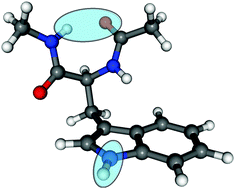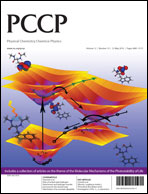The excited-state electronic potential-energy surfaces of the three conformers of the capped dipeptide N-acetyl tryptophan methyl amide (NATMA), for which UV and IR spectra have been reported by Dian et al. [J. Chem. Phys., 2003, 118, 2696], have been explored with ab initio electronic-structure methods. The results provide insight into the nonadiabatic electronic coupling mechanisms which are responsible for the pronounced and conformer-specific perturbations of the spectra, such as broad and congested UV spectra as well as the deletion of certain fundamentals in the IR spectrum of the S1 state. It is shown that the photophysical dynamics of NATMA is governed by at least five excited singlet electronic states: the two spectroscopic 1Lb and 1La states and the dissociative 1πσ* state of the indole chromophore, as well as a locally-excited state and a charge-transfer state of the peptide backbone. For the conformer NATMA C, which exhibits a γ-turn of the backbone, a potentially very efficient excited-state deactivation mechanism to the electronic ground state via three conical intersections has been revealed. The results confirm the important role of hydrogen bonds for rapid excited-state deactivation of peptides, which enhances their photostability.

You have access to this article
 Please wait while we load your content...
Something went wrong. Try again?
Please wait while we load your content...
Something went wrong. Try again?


 Please wait while we load your content...
Please wait while we load your content...